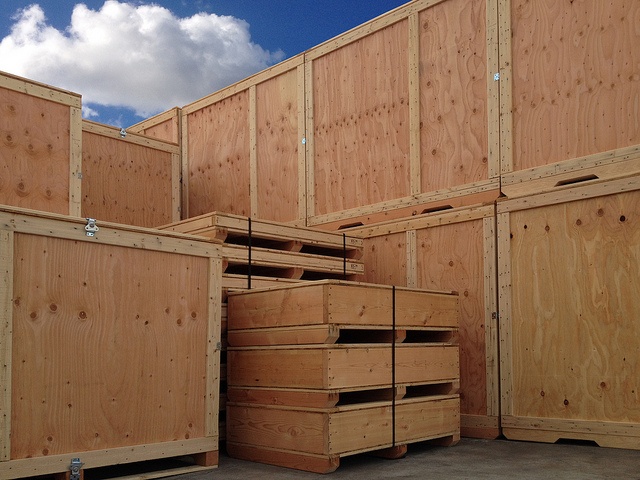
ATA Cases
While wood crates and ATA cases have a number of similar uses and benefits, ATA cases have one unique difference, they are built according to Air Transport Association (ATA) 300 Category I Specifications. This means, ATA Spec 300, Cat I cases are designed to withstand the threats associated with 100 round trips by air, land or sea.
If a manufacturer specifies that its cases are made in strict compliance with ATA testing procedures, they should be able to withstand tremendous amounts of vibration, moisture, and even being dropped from heights up to 36” on all angles, corners, and surfaces. Typical case materials include plywood (birch, maple or poplar), steel, aluminum, plastic, fiberglass laminate, and more.
Also called flight case, roadie case or road case, these cases are considered the most popular shipping containers for the entertainment industry, the military, sports and medical. These cases can be outfitted with many accessories such as drawers, dividers, shelves, handles, foam and carpet lining, stacking devices, ventilation, and even power supply, they are often used in the trade show industry as well. They are incredibly strong and long lasting, they are commonly used to protect the following while in transit or being stored:
|
ATA Cases can be used for:
|
|
Wood Crates
So how do wooden crates compare? Well, most advocates will tell you that wood crates are more affordable than ATA cases. This is often a major deciding factor for many small to mid-sized businesses.
Although wood boxes are considered less expensive, they are still sturdy, secure and strong, and they can withstand intense vertical pressure when stacked correctly. Because they can be safely stacked, space is optimized. This is a benefit for bulk transport of goods.
|
Other common uses include:
|
|
Another benefit of using wood crates is they are environmentally friendly and they require fewer resources to make and because they are completely natural, they contain no toxic ingredients.
Further, wooden boxes can be heat treated to meet International ISPM 15 standards to withstand many of the perils associated with temperate climates or inclement weather.
By nature, wooden crates feature simpler, natural designs and they are easy to customize from a customer’s design specs. Additionally, many of the same accessories you will find on ATA cases can be used to create an even more secure and more functional wood box.
Typically wooden crates are constructed from plywood (CDX, ACX), lumber (Doug Fir, White pine) and can incorporate steel, aluminum, plastic, carpet, coatings, and more. Learn more about the different materials used in case and crate construction in the Valley Box article Wood Crate vs Cardboard Box vs Case vs Hard Plastic Case.




